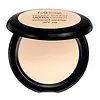ISADORA Velvet Touch Ultra Cover Compact Powder SPF 20 Versus Benefit Cosmetics Hello Flawless Powder
What's inside
What's inside
 Key Ingredients
Key Ingredients

 Benefits
Benefits

No benefits
 Concerns
Concerns

 Ingredients Side-by-side
Ingredients Side-by-side

Talc
AbrasiveZea Mays Starch
AbsorbentEthylhexyl Methoxycinnamate
UV AbsorberSilica
AbrasiveCaprylyl Methicone
Skin ConditioningDimethicone
EmollientMica
Cosmetic ColorantKaolin
AbrasivePolypropylene
Pentaerythrityl Tetraisostearate
EmollientZinc Stearate
Cosmetic ColorantPolymethyl Methacrylate
Vp/Hexadecene Copolymer
Aluminum Hydroxide
EmollientTrimethylsiloxysilicate
EmollientTriethoxycaprylylsilane
Dimethiconol Stearate
EmollientGlyceryl Ethylhexanoate/Stearate/Adipate
EmollientDimethiconol
EmollientLecithin
EmollientLauroyl Lysine
Skin ConditioningCetyl PEG/PPG-10/1 Dimethicone
EmulsifyingHexyl Laurate
EmollientPolyglyceryl-4 Isostearate
EmulsifyingTocopherol
AntioxidantAscorbyl Palmitate
AntioxidantCitric Acid
BufferingPhenoxyethanol
PreservativePotassium Sorbate
PreservativeCI 19140
Cosmetic ColorantCI 77007
Cosmetic ColorantCI 77491
Cosmetic ColorantCI 77492
Cosmetic ColorantCI 77499
Cosmetic ColorantCI 77742
Cosmetic ColorantCI 77891
Cosmetic ColorantTalc, Zea Mays Starch, Ethylhexyl Methoxycinnamate, Silica, Caprylyl Methicone, Dimethicone, Mica, Kaolin, Polypropylene, Pentaerythrityl Tetraisostearate, Zinc Stearate, Polymethyl Methacrylate, Vp/Hexadecene Copolymer, Aluminum Hydroxide, Trimethylsiloxysilicate, Triethoxycaprylylsilane, Dimethiconol Stearate, Glyceryl Ethylhexanoate/Stearate/Adipate, Dimethiconol, Lecithin, Lauroyl Lysine, Cetyl PEG/PPG-10/1 Dimethicone, Hexyl Laurate, Polyglyceryl-4 Isostearate, Tocopherol, Ascorbyl Palmitate, Citric Acid, Phenoxyethanol, Potassium Sorbate, CI 19140, CI 77007, CI 77491, CI 77492, CI 77499, CI 77742, CI 77891
Ethylhexyl Methoxycinnamate 5.94%
UV AbsorberTitanium Dioxide 1.7%
Cosmetic ColorantBenzophenone-3 2%
UV AbsorberTriethoxycaprylylsilane
Silica
AbrasiveNylon-12
Phenyl Trimethicone
Skin ConditioningPolyethylene
AbrasiveTalc
AbrasiveLauroyl Lysine
Skin ConditioningPhenoxyethanol
PreservativeEthylene/Acrylic Acid Copolymer
Emulsion StabilisingAluminum Dimyristate
Emulsion StabilisingBHT
AntioxidantDisodium Stearoyl Glutamate
CleansingSodium Dehydroacetate
PreservativeMethicone
EmollientPolymethyl Methacrylate
Isononyl Isononanoate
EmollientAlumina
AbrasiveCI 77163
Cosmetic ColorantMica
Cosmetic ColorantCI 75470
Cosmetic ColorantIron Oxides
Ethylhexyl Methoxycinnamate 5.94%, Titanium Dioxide 1.7%, Benzophenone-3 2%, Triethoxycaprylylsilane, Silica, Nylon-12, Phenyl Trimethicone, Polyethylene, Talc, Lauroyl Lysine, Phenoxyethanol, Ethylene/Acrylic Acid Copolymer, Aluminum Dimyristate, BHT, Disodium Stearoyl Glutamate, Sodium Dehydroacetate, Methicone, Polymethyl Methacrylate, Isononyl Isononanoate, Alumina, CI 77163, Mica, CI 75470, Iron Oxides
Ingredients Explained
These ingredients are found in both products.
Ingredients higher up in an ingredient list are typically present in a larger amount.
Ethylhexyl Methoxycinnamate is an organic compound that provides UVB protection. It often goes by the more common name of octinoxate. It is created from methoxycinnamic acid and 2-ethylhexanol.
Ethylhexyl Methoxycinnamate absorbs UVB rays with wavelengths between 280-320 nm. UV absorbers protect your skin by using chemical reactions to convert UV rays into heat and energy.
UVB (290-320 nm) rays emit more energy than UVA rays. They are capable of damaging DNA, causing sunburns and are thought to be linked to skin cancer.
The state of Hawaii has banned sunscreens containing octinoxate due to its potential impact on coral reefs. More research is needed to bridge gaps in this research. The European Union allows higher levels of octinoxate in sunscreens than the US and Australia.
Ethylhexyl Methoxycinnamate is oil soluble. It is not stable and may lose efficacy when exposed to sunlight.
Learn more about Ethylhexyl MethoxycinnamateThis ingredient comes from a fatty acid (lauric acid) and amino acid (lysine). It is used to add a silky feel to cosmetics.
According to a manufacturer, its fatty acid base leaves a silky feeling on the skin. It also has emollient properties because of this. Emollients help soften skin by preventing water from evaporating.
Lauroyl lysine is barely soluble in water.
Learn more about Lauroyl LysineMica is a naturally occurring mineral used to add shimmer and color in cosmetics. It can also help improve the texture of a product or give it an opaque, white/silver color.
Serecite is the name for very fine but ragged grains of mica.
This ingredient is often coated with metal oxides like titanium dioxide. Trace amounts of heavy metals may be found in mica, but these metals are not harmful in our personal products.
Mica has been used since prehistoric times throughout the world. Ancient Egyptian, Indian, Greek, Roman, Aztec, and Chinese civilizations have used mica.
Learn more about MicaPhenoxyethanol is a preservative that has germicide, antimicrobial, and aromatic properties. Studies show that phenoxyethanol can prevent microbial growth. By itself, it has a scent that is similar to that of a rose.
It's often used in formulations along with Caprylyl Glycol to preserve the shelf life of products.
This ingredient is also known as PMMA. It is a polymer microsphere, composed of tiny, perfectly spherical particles formed from repeating units.
In cosmetics, PMMA is mainly used to give a soft or blurring effect. The transparent particles are able to scatter light and help reduce the appearance of fine-lines and imperfections.
PMMA is also able to enhance the texture of products by add a smooth feel.
Learn more about Polymethyl MethacrylateSilica, also known as silicon dioxide, is a naturally occurring mineral. It is used as a fine, spherical, and porous powder in cosmetics.
Though it has exfoliant properties, the function of silica varies depending on the product.
The unique structure of silica enhances the spreadability and adds smoothness, making it a great texture enhancer.
It is also used as an active carrier, emulsifier, and mattifier due to its ability to absorb excess oil.
In some products, tiny microneedles called spicules are made from silica or hydrolyzed sponge. When you rub them in, they lightly polish away dead skin layers and enhance the penetration of active ingredients.
Learn more about SilicaTalc is a clay mineral. It helps absorb moisture and improve the texture of products. Like other types of clay, Talc can have a slight exfoliating effect on skin. Talc can be added to increase the volume of products.
Some Baby powders are made by combining talc with corn starch. The word "talc" comes from Latin and originates from Arabic. Talc is a mineral commonly found throughout the world.
If you have any concerns about using talc, we recommend checking out the FDA's official page.
Learn more about TalcTriethoxycaprylylsilane is a silicone used to bind and stabilize ingredients.
As an emulsifier, it helps prevent ingredients from separating. This can help elongate the shelf life of products.
Triethoxycaprylylsilane is often used to coat mineral sunscreens ingredients to help give a better feel. It also helps reduce oxidative stress in sunscreens.
Learn more about Triethoxycaprylylsilane